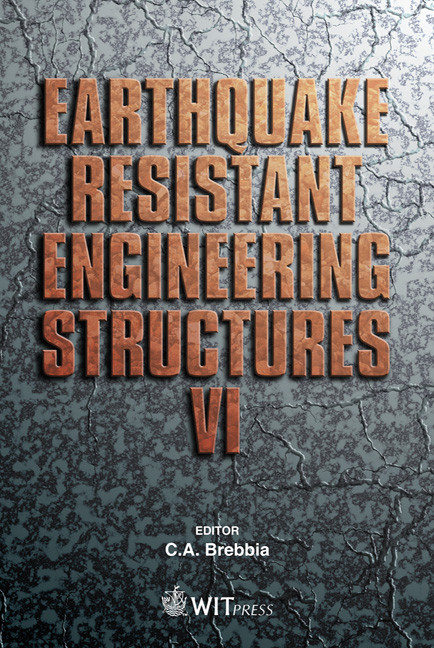Seismic Reliability And Cost Evaluation For A Hospital Lifeline Network System
Price
Free (open access)
Transaction
Volume
93
Pages
9
Published
2007
Size
571 kb
Paper DOI
10.2495/ERES070301
Copyright
WIT Press
Author(s)
K. Fuchida
Abstract
This paper presents an evaluating method for seismic reliability and costs of a lifesaving lifeline connecting to a hospital during an earthquake. By using the reliability analysis method for a lifeline network based on the Monte Carlo method, reliability of a virtual model and a real one of Yatsushiro-city water supply pipeline network is evaluated. Numerical computations are performed for models with various conditions of ground and pipes. As a result, in a case of seismic intensity 5, the reliability of a pipeline connecting to a hospital near the sea side is low. In a case of seismic intensity 6, all nodes connecting to hospitals have very low reliability and this suggests that other methods of preparing for earthquakes are needed except improving method of conditions of grounds or pipes. Keywords: lifeline, reliability, network, cost. 1 Introduction Severe damages of lifeline systems during earthquake much affect the social activity and urban life of citizens. It is very important that aseismic investment for lifesaving lifeline systems is performed in view of fast recovery of economical and social works in urban area after earthquakes. This study aims to investigate the seismic reliability and costs of a lifesaving lifeline connecting to a hospital during earthquake. The cost is evaluated by the sum of aseismic investment (mainly pipeline reinforcement and ground improvement), restoration cost and system-down cost with the system reliability, and then discuss the effective investment by minimizing the total cost of every pre-investment and post-repairing cost. For the assumption model of water
Keywords
lifeline, reliability, network, cost.





